Sun, Surf and Horses’ Thundering Hooves Keep a Tradition Alive in Spain – The New York Times
Sanlúcar de Barrameda Journal
Sun, Surf and Horses’ Thundering Hooves Keep a Tradition Alive in Spain
By RAPHAEL MINDER
SEPT. 7, 2015
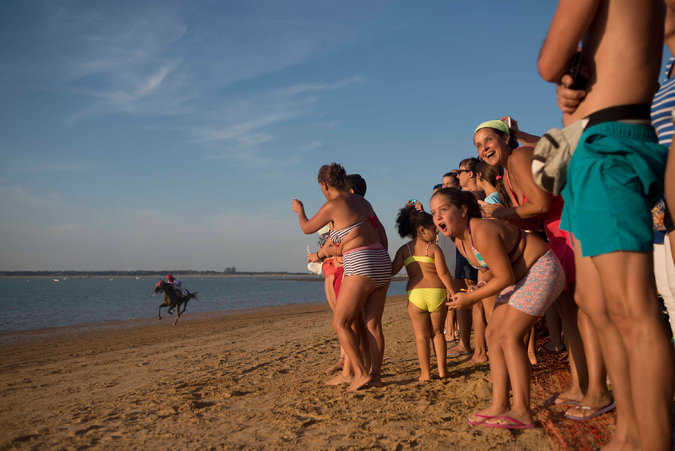
Spectators watched a race in August on a beach in Sanlúcar de Barrameda, Spain.
Credit Laura Leon for The New York Times
SANLÚCAR DE BARRAMEDA, Spain — Local fishermen first started racing cart horses on the beach here while waiting to unload the day’s catch from their boats. Then, 170 years ago, the competition got proper rules, thanks to the British merchants who also developed this sherry wine region and then combined both activities by becoming corporate sponsors of the horse races.
Today, the races at Sanlúcar de Barrameda have evolved into a spectacular, if rough-hewed, event, the horses galloping between the water’s edge and the cheering spectators on this estuary of the Guadalquivir River, from where Christopher Columbus and Ferdinand Magellan once set sail. On six afternoons this August, the races drew about 35,000 spectators a day. Sanlúcar remained true to its traditions, which include releasing the thoroughbreds by sometimes lowering a flag rather than using a starting gate. In one instance, a panic-stricken horse bolted from the beach and stomped through a nearby parking lot, cutting itself as it trampled a vehicle.
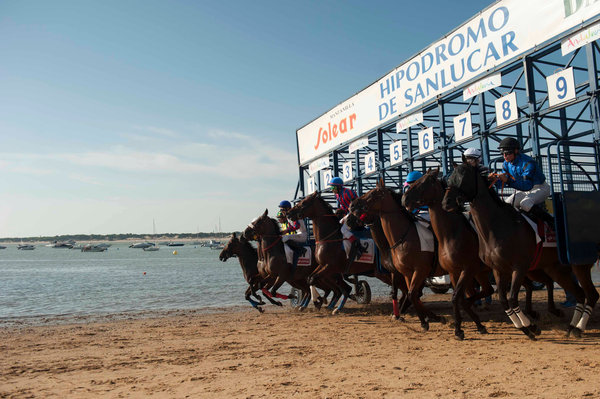
Sanlúcar combines both professional and amateur races, a juxtaposition reflected among the spectators as well.
Credit Laura Leon for The New York Times
“We’ve not completely removed the flag because that’s our tradition, and this is a sport where there should be some risk,” said Hermenegildo Mergelina Díez, the manager of Sanlúcar’s races. “We’re not organizing a game of chess.” Even if the sand can be treacherous and the spectators are protected by only a flimsy plastic fence, the racing in Sanlúcar is mostly free of accidents. And after a storied history, this year the race gained prominence as a bright spot in the otherwise gloomy landscape of Spanish horse racing.
Elsewhere in Spain, financial difficulties and feuding between race organizers and track owners over debts recently led to the closing of other racecourses, lifting Sanlúcar. “Spanish horse racing is in total crisis, so it’s great to come to Sanlúcar, where horses are valued and you face such a unique challenge as a rider, with the spectators almost on top of you,” said Cristina Buesa, 25, who won one of the races opened to amateurs.
Sanlúcar combines professional and amateur races, a juxtaposition reflected among the spectators as well. Many in the crowds were first-time race watchers, whose priority seemed to be taking selfies or a great vacation snapshot as the horses galloped past them, rather than trying to follow the race card and picking a winner. “I would never normally watch horses race, but to be able to do so on the beach is something else,” said María del Carmen González, a schoolteacher.
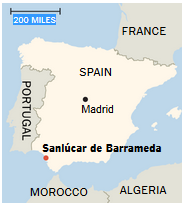
By The New York Times
A few minutes later, however, she was shrieking with joy when one of her relatives informed her that the horse on which they had placed a joint bet of 8 euros, or almost $9, had won. “My first race, and I’m already a winner,” she shouted. On any given race day here, beachgoers in their swimwear watch free of charge and then pack up their umbrellas when the racing ends. An additional 7,000 visitors get V.I.P. passes or pay €12 to get into an enclosure in front of the finish line.
They then spend their evening socializing there, enjoying the local wine and prawns. “This isn’t the Kentucky Derbyr or the Prix de l’Arc de Triomphe, nor does it even have the racing prestige of some other Spanish meetings, but Sanlúcar is Sanlúcar,” Roberto Cocheteux, who owns 30 horses, said. “It’s a special place with a ground and climate that work for some horses but clearly not well for others,” he added. Sanlúcar is on a select list of beach races, which also includes Laytown in Ireland and Mackay Harbour in Australia. In northern Spain, amateur races also take place on the beaches of Loredo and Laredo. For a normal racing track, a good horse is one “with the capacity to really move up a gear in the last 200 meters,” Xavier Thomas Demeaulte, a French horse trainer, said.
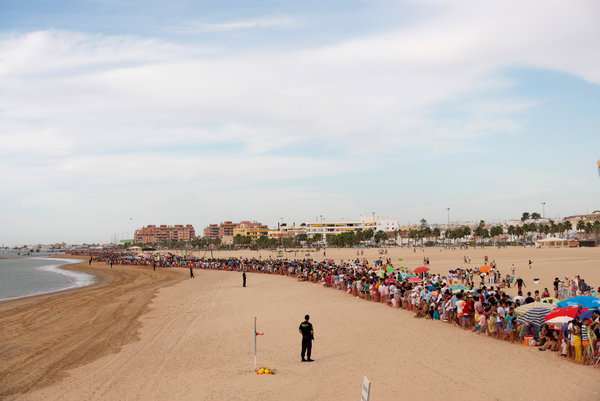
Police officers guard the racing area. Many spectators in Sanlúcar are first-time race watchers.
Credit Laura Leon for The New York Times
“You don’t need a good horse for a place like Sanlúcar, but one that can handle a very fast race, ground variations and close-by spectators,” he added. The longest race at Sanlúcar covers two kilometers, or about 1.2 miles, with tides and daylight dictating the schedule. The first race starts around 6 p.m., when the wet sand turns hard enough to withstand the weight of a galloping horse. The last race finishes about three hours later, as the sun sets over the Atlantic. Over six days this August, 167 horses raced here, up 30 percent from previous years.
“I should have been riding in Madrid this summer, but this is a great opportunity to discover something new,” said Julia Zambudio, who was riding for the first time in Sanlúcar. In late November, the Zarzuela racecourse in Madrid, the busiest in Spain, closed because of a dispute linked to its financial losses. In August, Spain’s recently appointed minister for education, culture and sports, Íñigo Méndez de Vigo, brokered an agreement that should allow racing to resume in September at Zarzuela. The minister is himself a racing enthusiast who has owned prizewinning thoroughbreds. Mr. Mergelina Díez, Sanlúcar’s race manager, said Spain’s horse racing sector got into trouble in part because “it’s just relied on public subsidies rather than develop corporate sponsorship.”
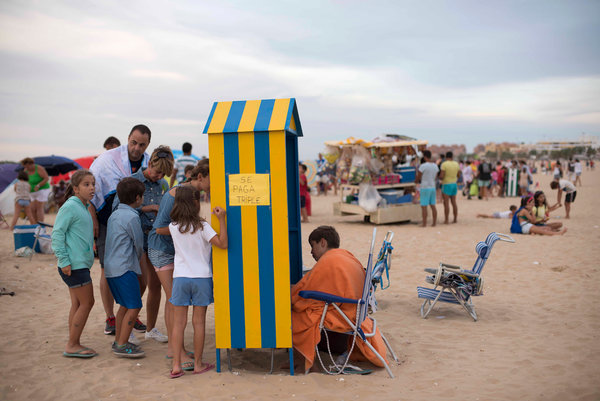
The bookmakers are local children, and they usually allow a maximum bet of €3, or about $3.35.
Credit Laura Leon for The New York Times
In Mijas, in southern Spain, the Costa del Sol racecourse opened in 1999 but closed to horse racing 14 years later because of unsustainable losses. The Mijas town hall invested €12 million to build the racecourse. Sanlúcar breaks even on a budget of €600,000, a fifth of which comes from state sponsors. The races award €140,000 in prize money.
Rafael Hidalgo, president of Sanlúcar’s races, suggested that other race organizers needed to “add other forms of entertainment” to survive financially, at a time when “young people are clearly more interested in other sports.” For instance, Sanlúcar held a fashion show in its V.I.P. enclosure. “We guarantee our success because this is also a tourism and social event, on top of the horse races,” Mr. Hidalgo said.
This year, some of Sanlúcar’s races were also included for the first time in the betting schedule of the national horse racing lottery. Still, as with every other aspect of the Sanlúcar races, even placing a bet can be done in an unusual way at one of the miniature stalls set up along the beach. Some of the bookmakers are local children, and they usually allow a maximum bet of €3. While Spain’s horse racing industry is mired in debt, the budding entrepreneurs of Sanlúcar are doing just fine, according to Ángel Velasco Fernández, an 11-year-old who worked one stand and estimated his daily earnings at €50 to €70.
“I like the business, money and having fun,” he said.
————————————————————-
or read as pdf
